My favorite article on parasols is
Marta Vincent's overview; there's also an expanded version (sans color pictures) in the Spring 2016
Homefront Herald, starting on page 8.
The first thing about 1860s parasols is that they are
small. Of the closely-dated (1850-1870) originals in The Met's collection, nineteen have dimensions included. Only two exceed 30" long, both of which are European in origin and dated to the 1850s; based on Marta's article, I suspect they date from the
early 1850s, when parasols tended to be larger. The other seventeen range from 22.6"-28.5", averaging 25.2" long. The rib length is only given for three of the parasols: each is 26" long, with ribs of 10", 10", and 13". The others have similar proportions, with the ribs just under half the stick length.
 |
Four parasols from the author's collection. The black parasol in the
back has been recovered, the other three have their original canopies. |
The four originals in my collection (estimated dates 1850s-1870s) are the same size as the Met's; they average 25.2" long (ranging 22"-28"), with ribs averaging 11" (10" to 13").
Period parasols can either have straight sticks ("walking" parasols) or ones which fold with a joint in the center ("carriage" parasols). My collection has two folding parasols and two which do not fold; the 17 Met parasols consist of 11 folding (visible joint and sleeve), four straight, and two which are unclear.
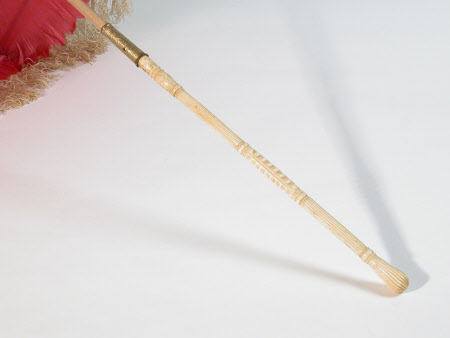 |
The metal sleeve covers a joint, allowing the parasol to be
folded in half for transport or held straight while in use.
From an 1850 parasol in the UK National Trust collections. |
A very popular style of carriage/folding parasol has a second joint at the top of the stick, allowing the canopy to be tilted up to 90 degrees. These "black marquise" parasols typically have black canopies, black (or rarely, white) linings, and all-black sticks; they are American in origin, and date from the 1860s and 1870s.
 |
| Black folding parasol, likely a marquise, c. 1860, from The Met. |
 |
Folding and tilting black marquise parasols in the author's
collection. The one on the right has been recovered. |
 |
Black marquise parasols closed and folded. Both 28" long when
opened, they fold to 16" and 15". From the author's collection. |
While the straight-stick parasols can't fold, some dissemble in other ways. One in my collection slides apart, with the carved handle separating from the metal upper stick--the mechanism is such that it actually can't close all the way with the handle in place, and there's a small notch at the end of the metal stick for the canopy clasp. My other straight-stick parasol can be shortened by unscrewing part of the carved handle (this one can fully close with the handle in place).
 |
Straight parasols with detachable handles,
from the author's collection. |
The sticks of parasols can be made of a variety of woods, metal, and precious materials including coral and ivory. Steel ribs come into use around 1860; cane and whalebone (baleen) ribs are used earlier.
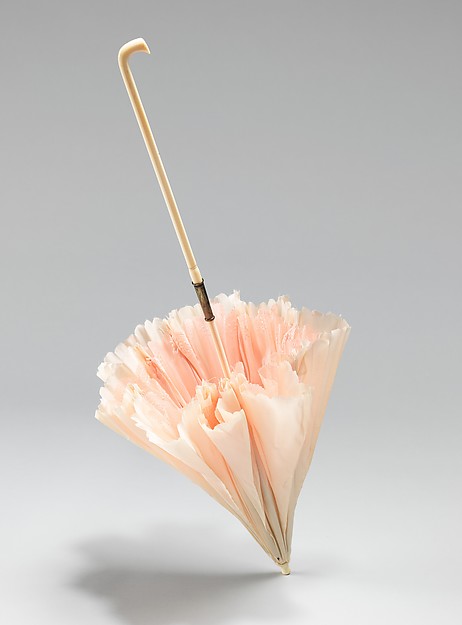 |
Folding parasol, 1860-1869, in The Met;
the white hooked handle may be carved bone or ivory. |
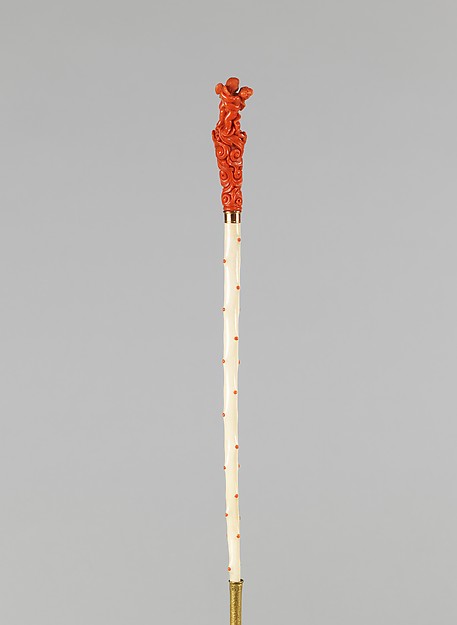 |
Parasol handle of carved coral and ivory.
French, c. 1855-1865. From The Met. |
Canopies also show a range of decorations, including
plain and
figured material,
embroidery, tucks,
fringe,
ruffles,
tassels,
beads, and
lace. All of the originals I've seen or read about have silk canopies; where present, linings are also silk, often very lightweight. The exception is a single Met parasol marked "silk/linen" (the coral/ivory one above).
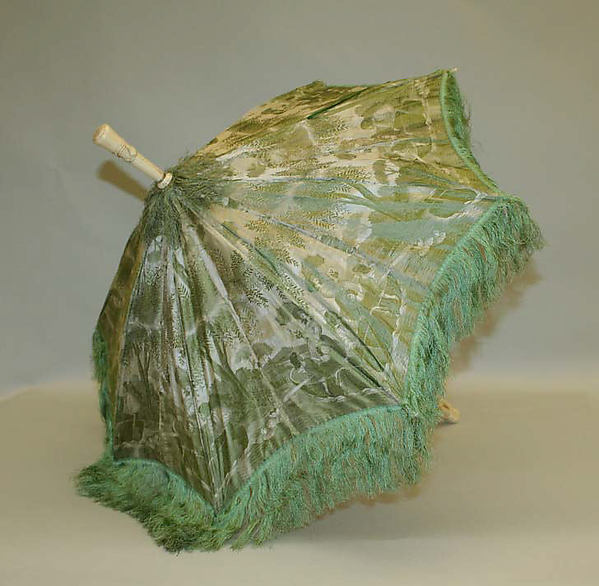 |
| Brocade parasol with silk fringe, c. 1860, from The Met. |
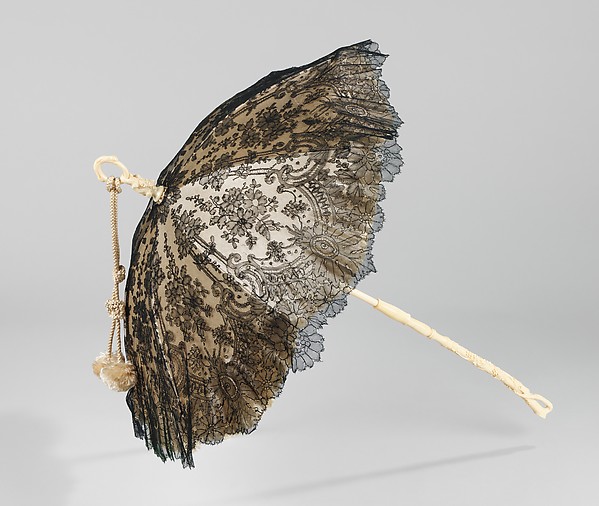 |
Black Chantilly lace over a white silk canopy is a popular design
from the 1850s to 1870s. From The Met, which also has one in black. |
The only current source for appropriately-sized reproduction parasols is
Maggie Reese, who recently started producing 25" walking parasols; she is also one of the few people commercially re-covering antique parasols at this time. For re-covering one's own antique frame, the late Marta Vincent wrote some
succinct instructions at the Sewing Academy.













